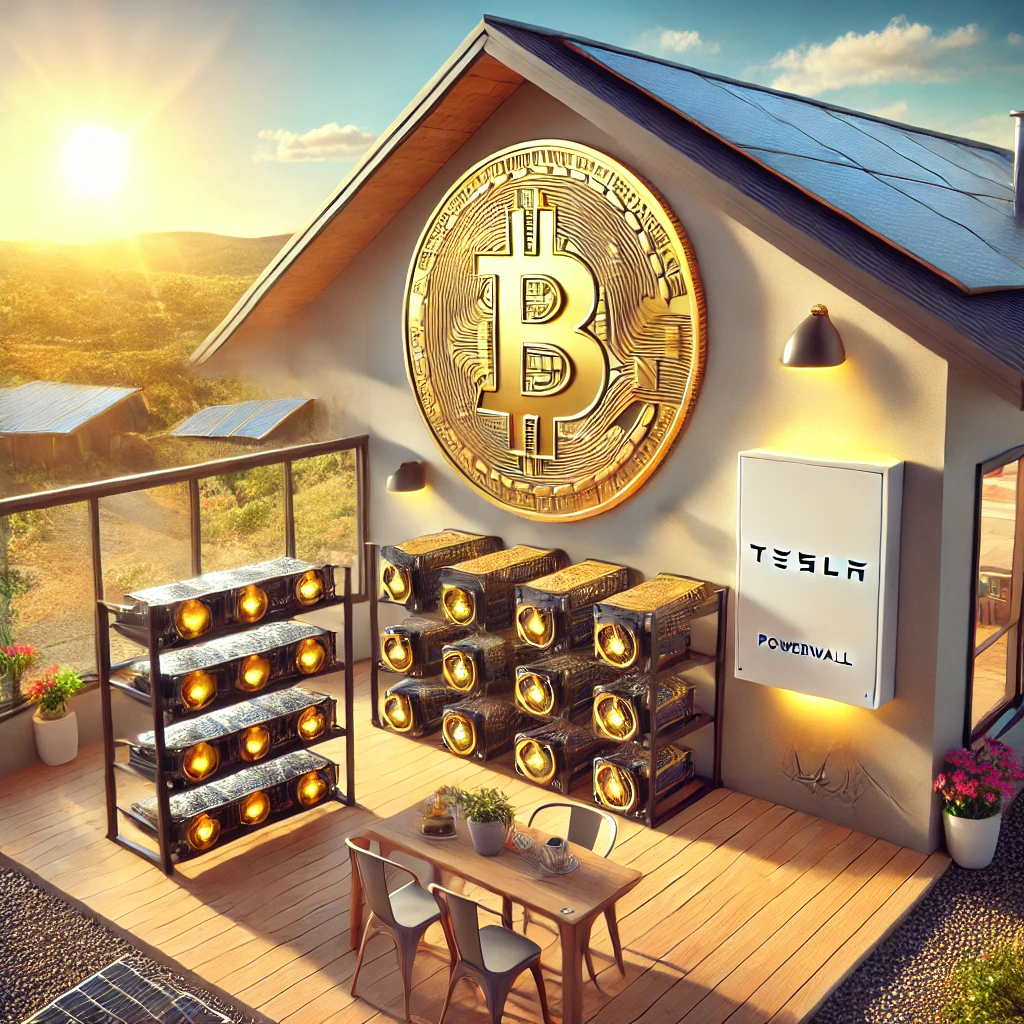Bitcoin mining has become a global phenomenon, offering a pathway for individuals and businesses to generate cryptocurrency through computational work. In Western Australia (WA), the potential for mining Bitcoin is influenced by several factors, such as electricity costs, solar feed-in tariffs, mining rig performance, and the ever-fluctuating value of Bitcoin. This post will delve into the business case of Bitcoin mining in WA, exploring the assumptions, key considerations, and capital investment required for a feasible mining operation.
Key Assumptions for Bitcoin Mining in Western Australia
When evaluating Bitcoin mining as a business proposition in WA, several core assumptions need to be made. These assumptions will form the foundation for understanding the viability of the venture:
- Electricity Costs
- Solar Feed-In Tariff
- Bitcoin Mining Reward
- Mining Rig or ASIC Hashrates
- Initial Cost of Mining Rig
- Cost of Solar Panel Setup
- Cost and Benefits of Energy Storage (BESS)
Each of these elements plays a critical role in determining profitability and the sustainability of mining operations in the region.
Electricity Costs in Western Australia
One of the biggest expenses in Bitcoin mining is electricity. The more power-hungry a mining rig, the higher the operational costs. Electricity costs in WA can vary depending on the location, provider, and the type of energy consumed (e.g., grid electricity versus self-generated solar energy).
- Average electricity cost in WA: Approximately AUD 0.30 per kWh for residential rates (source).
- Commercial rates: Often slightly lower, depending on contracts with the energy provider. Commercial operations may see prices closer to AUD 0.20 per kWh.
- Off-peak rates: Some miners may take advantage of off-peak rates, which can reduce costs, potentially lowering them to around AUD 0.15 per kWh during off-peak hours (typically late at night).
Given the substantial electricity consumption of mining rigs, any fluctuation in these rates can heavily impact profitability. Miners may consider using renewable energy sources like solar to offset electricity costs.
Feed-In Tariff for Solar in Western Australia
Solar energy is a significant factor for miners in WA due to the region’s abundant sunshine. Miners with a solar installation may consider leveraging solar power to reduce reliance on grid electricity and potentially feed excess energy back into the grid for additional income.
- Feed-in tariffs in WA: Currently around AUD 0.07 to AUD 0.10 per kWh, depending on the retailer (source).
- Solar energy self-consumption: Miners generating solar power will benefit most by consuming their own generated electricity, which could lower their effective electricity costs significantly, depending on the size of the solar installation.
While feed-in tariffs alone won’t cover the costs of mining, solar can act as a buffer to the high grid electricity prices, making solar a key part of the business case.
Bitcoin Mining Reward
Mining Bitcoin involves solving complex mathematical problems to validate transactions on the blockchain, and in return, miners receive rewards in Bitcoin. The reward is not static; it changes over time due to factors like Bitcoin halving events, where the amount of Bitcoin miners receive is halved approximately every four years.
- Current Bitcoin reward: As of September 2024, miners receive 6.25 BTC per block mined.
- Bitcoin halving: The next halving is expected in 2024, where the reward will decrease to 3.125 BTC (source).
- Transaction fees: In addition to the block reward, miners also earn fees from transactions. Transaction fees typically range from 0.1 to 1 BTC per block, though this fluctuates with network demand.
It’s important to keep in mind that as the block reward decreases, the importance of transaction fees rises. Thus, the profitability of mining can fluctuate significantly based on these factors.
Mining Rig or ASIC Hashrates
The performance of a Bitcoin mining rig is measured in hashrate, which refers to the number of calculations a machine can perform per second. The higher the hashrate, the more chances a miner has to solve the cryptographic puzzle and earn Bitcoin. Rigs can vary widely in terms of their efficiency and power consumption.
- Popular mining rigs: ASIC (Application-Specific Integrated Circuit) machines are the industry standard for Bitcoin mining.
- Average ASIC hashrates:
- Power consumption: On average, these rigs consume between 3,000 and 3,500 watts.
Given these figures, mining operations in WA would need to ensure that their rigs can deliver the right combination of high hashrate and low power consumption to maintain profitability.
Cost of Mining Rig or ASIC
The cost of Bitcoin mining hardware is another crucial factor in evaluating a business case for Bitcoin mining. The initial investment can be substantial, particularly when purchasing high-end ASIC machines, which offer better efficiency and higher hashrates but come at a premium price.
- Antminer S19 Pro: Approximately AUD 8,000 to AUD 12,000 per unit, depending on availability and market demand (source).
- Whatsminer M30S: AUD 6,000 to AUD 10,000 per unit (source).
It’s important to note that these rigs have a limited lifespan, typically lasting around 2 to 3 years before becoming outdated or inefficient compared to newer models. As technology evolves, miners will need to reinvest in new hardware to stay competitive.
Cost of Solar Panel Setup
In addition to mining rigs, miners can invest in solar panels to reduce energy costs. This is especially valuable in WA, where sunlight is abundant, making solar a strong contender for reducing grid dependency.
- Cost of solar panel installation: A 10 kW solar panel system, capable of producing approximately 40 kWh per day in optimal conditions, costs around AUD 10,000 to AUD 12,000, including installation (source).
- Solar system maintenance: Solar panels generally require minimal maintenance, but occasional cleaning and inverter replacement (every 5 to 10 years) may add around AUD 500 annually to maintenance costs.
Adding Energy Storage: Using a Battery Energy Storage System (BESS)
To optimize energy use and further reduce costs, miners in WA can integrate a Battery Energy Storage System (BESS) into their setup. The BESS can store energy generated during off-peak hours or when solar production is high, then discharge during peak hours when electricity rates are higher. This strategy allows miners to avoid paying peak electricity prices while ensuring that their mining rigs are powered consistently.
Benefits of Using a BESS
- Energy cost optimization: By charging the battery during off-peak hours (when rates can be as low as AUD 0.15 per kWh) and discharging during peak hours (when rates are higher, around AUD 0.30 per kWh), miners can significantly reduce their electricity costs.
- Increased self-sufficiency: A BESS allows miners to rely less on the grid, especially during times of high energy consumption or grid instability, providing a more reliable energy source.
- Maximized use of solar power: Any excess solar energy produced during the day that isn’t used immediately by the mining rigs can be stored in the battery for use later, minimizing reliance on grid electricity.
- Environmental benefits: Utilizing a BESS in conjunction with solar energy reduces the carbon footprint of the mining operation, making it a more sustainable business model.
Cost of a Battery Energy Storage System (BESS)
The capital cost of a BESS depends on the size of the system and its storage capacity. For a typical 20 kWh system, which could cover the energy demands of a single mining rig for several hours, the costs are:
- Capital cost: Approximately AUD 10,000 to AUD 15,000 for a 20 kWh BESS, including installation (source).
- Maintenance costs: BESS systems require minimal maintenance, but inverter replacement every 5-10 years could cost around AUD 500 to AUD 1,000, depending on the system.
- Lifespan: Most BESS units last 10 to 15 years, with efficiency gradually decreasing over time.
Estimating Profitability and Time to Break Even with BESS Integration
To estimate the impact of adding a BESS, let’s update the previous example where a miner in WA uses a solar installation, a single Antminer S19 Pro, and now integrates a 20 kWh BESS.
- Hashrate: 110 TH/s
- Electricity cost: AUD 0.30 per kWh (grid), AUD 0.10 per kWh (solar), and AUD 0.15 per kWh (charging during off-peak with BESS)
- Mining reward: 6.25 BTC per block (adjusted for mining pool shares)
- Bitcoin price: AUD 40,000 (as of September 2024)
- Power consumption: 3,250 W
- Mining efficiency: 29.5 J/TH (joules per terahash)
- Initial capital costs: AUD 10,000 for the solar panel setup, AUD 10,000 for the Antminer S19 Pro, and AUD 12,000 for a 20 kWh BESS.
Daily Electricity Usage with BESS
- Daily electricity usage: 3,250 W * 24 = 78 kWh
- Assuming solar generates 40 kWh, the miner draws an additional 38 kWh from the grid or the BESS system.
- Daily electricity cost: The BESS covers peak hours, reducing the average grid cost:
- 38 kWh during off-peak at AUD 0.15/kWh = AUD 5.70
- Remaining solar power is free or AUD 0.10/kWh = AUD 4.00
- Total daily electricity cost: AUD 9.70
Daily Earnings with BESS
- Daily earnings: 0.00055 BTC * AUD 40,000 = AUD 22
- Daily profit: AUD 22 – AUD 9.70 = AUD 12.30
Time to Break Even with BESS
- Total capital costs: AUD 32,000 (solar, BESS, and Antminer rig)
- Break-even calculation: AUD 32,000 / AUD 12.30 = 2,602 days
- This is approximately 7.12 years to break even, assuming stable Bitcoin prices and mining difficulty, as well as optimal solar generation and BESS usage.
While the break-even period increases with the addition of a BESS, the benefits of cost optimisation, grid independence, and sustainability make it a viable long-term strategy, especially if electricity rates rise or if the Bitcoin price increases over time.
Integrating a Battery Energy Storage System (BESS) with solar power for Bitcoin mining in Western Australia can further optimize energy use and reduce costs. While the initial capital investment increases, the BESS provides significant benefits by reducing dependency on peak grid electricity, increasing the use of renewable energy, and improving long-term profitability.
With careful planning, miners can take advantage of the abundant solar resources in WA and utilize technologies like BESS to create a sustainable and cost-effective mining operation. However, the volatility of the Bitcoin market and changes in energy prices remain significant factors that need to be monitored closely.




